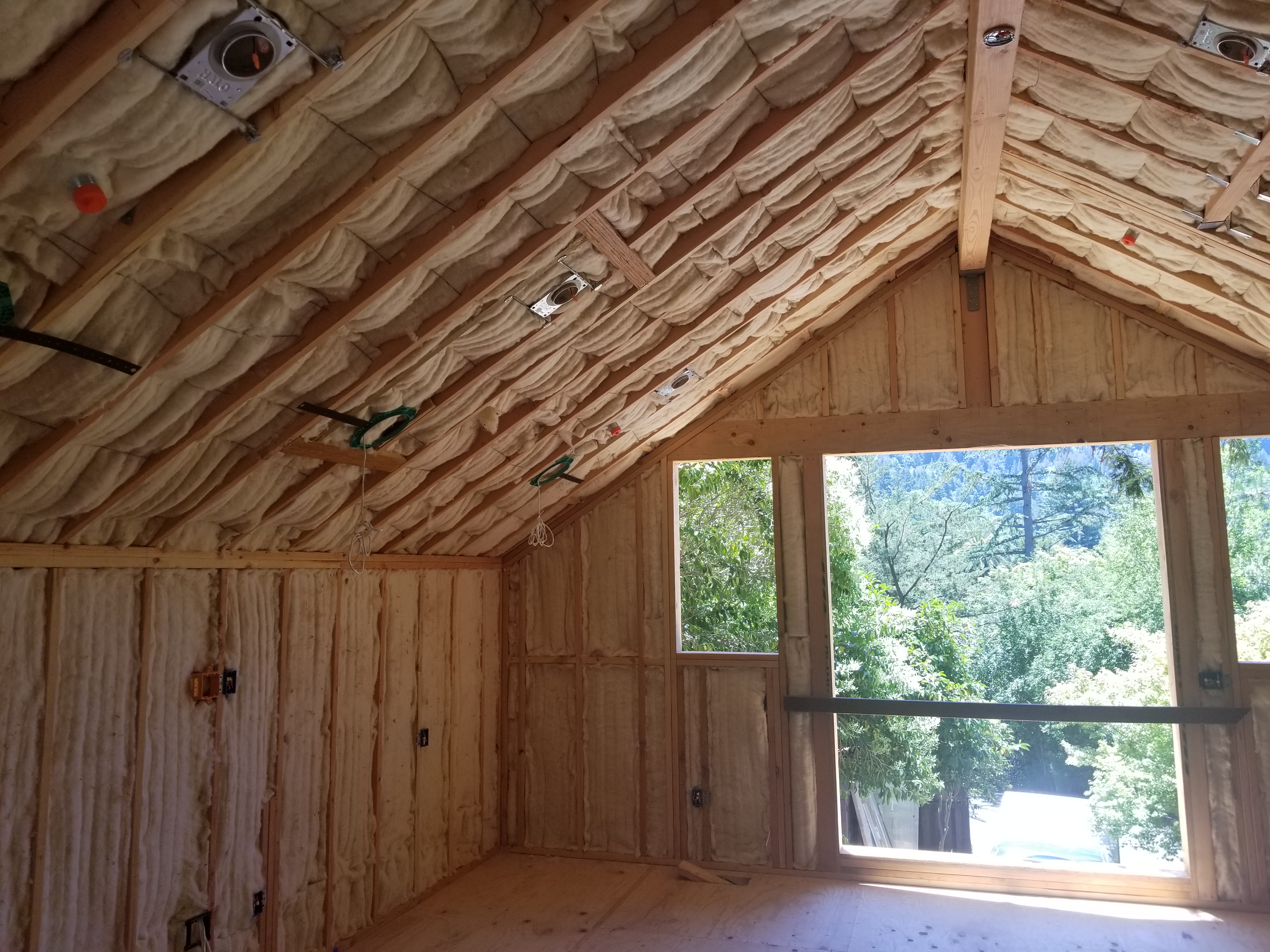Fiberglass insulation is the industry standard. It is highly unlikely this will change any time soon, if ever. We are here to disrupt your thinking and perhaps a fragment of market share by sharing our thoughts around the issues and hazards of the most common form of home insulation.
Let’s start with the most basic premise. Do you ski, or exercise in anyway? What color is your favorite fiberglass base layer? Yep, we know the answer. If you won’t put this stuff next to your body why would you put it in a confined space where the fibers are free to travel and inevitably find their way into your lungs?
This topic can be quite complex and lengthy but we’ll boil it down to a few key points…. and provide links to more information
It’s quite simple really. Fiberglass insulation used to require a label denoting it is a carcinogen. The science and the data is there to support grave results during lab tests.
So what’s changed? The label is gone and it is difficult to understand why.
Near as we can tell the aspect ratio of the fiber was adjusted along with the conversation concerning bio-persistence versus bio-solubility. This is where it can get more complex. For the layman (us), we’ve deduced the following:
Make the fiber shorter and it won’t persist (bio-persistence), instead it will become soluble (bio-solubility). There are two problems here. First and foremost, varied fiber dynamics notwithstanding, we are still talking about shards of glass lodged in your respiratory tract. Second, if the fiber is soluble what kind of insulating is it doing after it has been exposed to inevitable moisture within the cavity? More specifically: Dissolution occurs when water molecules attack the surface of the fiber and remove material.
(Source: https://ntp.niehs.nih.gov/ntp/roc/twelfth/2010/finalbds/glasswoolbd20100408_508.pdf)
Seems like a lose, lose.
So, do you want to trust your intuition or the manufacturer’s marketing drivel? Either way, you are not getting what you are paying for; or maybe you are given how cheap it is!
For the technically inclined please keep reading.
There is a link below to the 14th rendition of the report on carcinogens from the US Department of Health and Human Services. Strangely, a search for fiberglass will come up empty. One must instead search for Glass Wool Fibers. Hhhmmm is that a new tradename, or just something less searchable? Anyway, scroll to G for Glass Wool Fibers and off you go. Please take note of the ambiguities and lack of any reasonable conclusion.
We pulled a few passages below as highlights (or lowlights).
Insulation Glass Fibers
Types of insulation glass wool fibers tested in experimental animals included Owens-Corning glass wool, MMVF 10 and 10a (both of which represent the respirable fraction of Manville 901 glass fiber), MMVF 11 (the respirable fraction of CertainTeed B glass fiber), and unspecified glass wool fibers. Inhalation exposure of F344 rats to Owens-Corning FG insulation fiberglass with binder (4 to 6 μm in diameter and > 20 μm long) significantly increased the incidence of mononuclear-cell leukemia in rats (males and females combined). Glass-fiber-related pulmonary and tracheal-bronchial lymph-node lesions were observed but were less severe than for exposure to special purpose fibers. As with the findings for Tempstran 100/475 glass fibers in this strain (discussed above), these findings were considered to be exposure-related (Mitchell et al. 1986, Moorman et al. 1988). Intraperitoneal injection of MMVF 11 glass fibers caused mesothelioma of the abdominal cavity in male and female Wistar rats (Roller et al. 1996, 1997), and intraperitoneal injection of MMVF 10 glass fibers increased tumor rates in male Wistar rats (Miller et al. 1999).
SIGNIFICANTLY INCREASED THE INCIDENCE OF LEUKEMIA and CAUSED MESOTHELIOMA OF THE ABDOMINAL CAVITY and INCREASED TUMOR RATES!!! And we’re just moving on as a consumer base. WTF?
The piece goes on to discuss aspect ratios of 3:1 and 5:1 – with admitted inconsistencies and variation in production. This is where the bio-solubility versus bio-persistence argument kicks off. Irrespectively, YOU ARE STILL BREATHING SHARDS OF GLASS, and there is no evidence in lab tests to show lesser effects now that the label is gone.
SUMMARY
Fiberglass has always been an inferior product; we still cannot find an industry professional that likes it; oh, and now it is seems to be soluble. It has become the ‘go-to’ insulation product because it is cheap and its health hazards have been hidden from the public.
Our suggestion: build smarter, build smaller, and build healthier. You’ll be proud you did while enjoying the comfort, safety and protection of non-toxic materials every single day.

Links:
US Department of Health and Human Services
https://ntp.niehs.nih.gov/ntp/roc/content/profiles/glasswoolfibers.pdf
For more on the challenges with fiberglass check the following:
http://projectcensored.org/16-fiberglass-the-carcinogen-thats-deadly-and-everywhere/
http://www.naturalnews.com/035686_fiberglass_lung_diseae_cancer.html

There is a article about this location in archives not available for search engine…
Provided to me was the link to the article written..
again only available to the reader in archives
Preventdisease.com
April 3,2012 “Shocking Evidence, a WhistleBlower reveals a little known carcinogen that is literally everywhere “
Please do research on the subject and share the truth about the friable Facts.